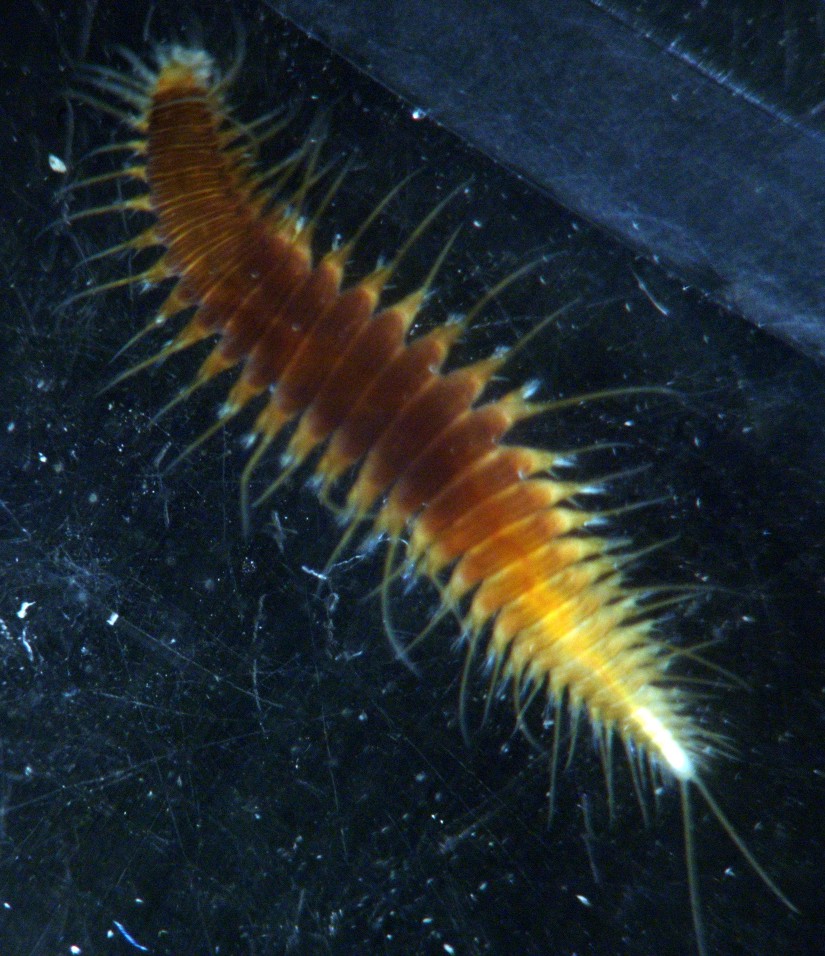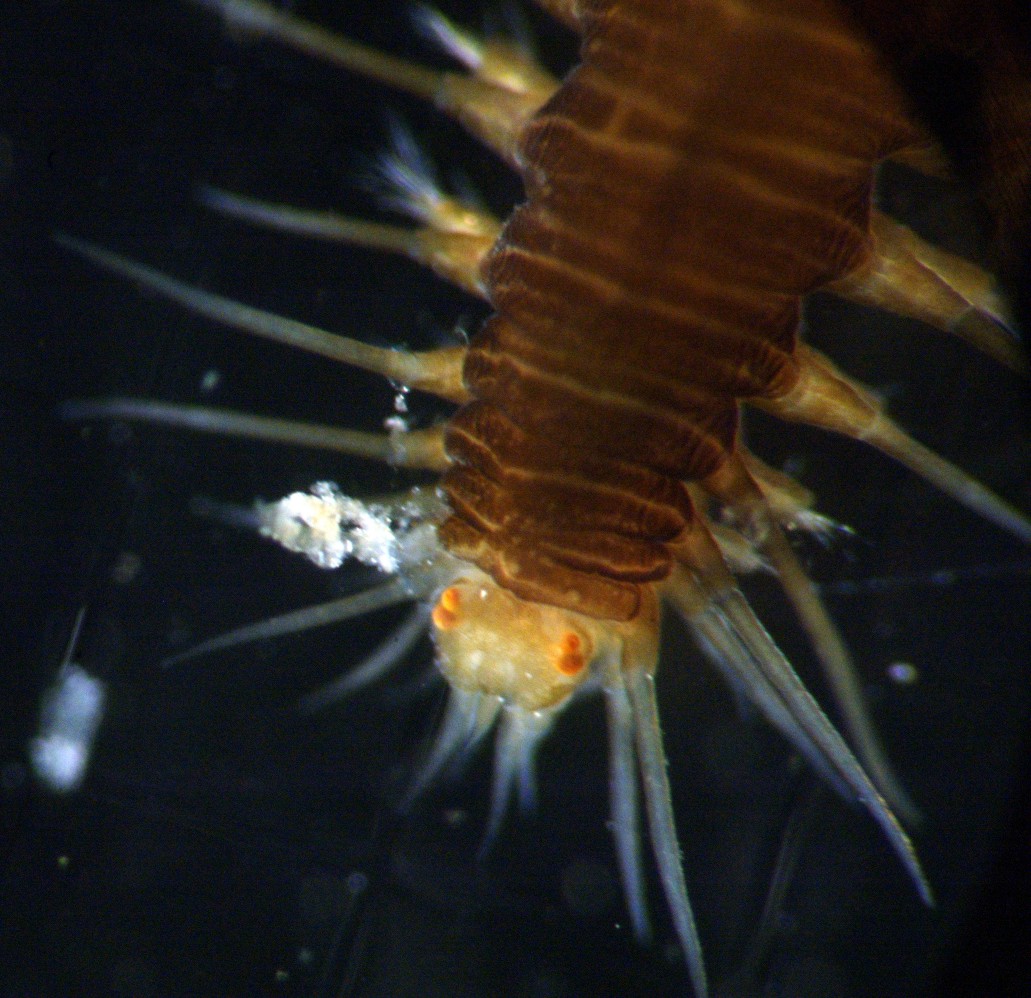How to Distinguish from Similar Species: Podarkeopsis bervipalpa has 8 pairs of tentacular cirri. Micropodarke dubia and Kefersteinia cirrata have only 2 prostomial antennae..
Geographical Range: Japan, southern Alaska to Gulf of California (Mexico); Peru.
Depth Range: Intertidal and subtidal
Habitat: Free-living on muddy bottoms or commensal on the ambulacral grooves of seastars such as Patiria miniata. Less common seastar hosts include Luidia foliata, Pteraster tesselatus, and Oreaster occidentalis. It may also be found on moon snail shells occupied by hermit crabs.
Biology/Natural History:
This species
is attracted to sea stars by chemoreception. Up to 20 can be
found
on a seastar host, and coexist peacefully with each other.
They reside
in the ambulacral groove or crawl over the oral surface. They
readily
crawl onto another host if it is nearby, or can often be found on the
mud
bottom without a host. Freeliving individuals do not seem interested
when
presented with a seastar host. The worms eat diatoms, harpactacoid
copepods,
and other small benthic invertebrates. They can live in polluted water
low in oxygen but are most common in clean water. This
individual
was found by Michael Kutzner when it exited a Mycale
adhaerens sponge from Padilla Bay.
| Return to: | |||
| Main Page | Alphabetic Index | Systematic Index | Glossary |
References:
Dichotomous Keys:Carlton, 2007
Kozloff 1987, 1996
General References:
Kozloff,
1993
Lamb
and Hanby, 2005
Morris
et al., 1980
Ricketts
et al., 1985
Scientific Articles:
Hickick, J.F. and D. Davenport,
1957. Further
studies in the behavior of commensal polychaetes: Three
species of
commensal polychaetes, Ophiodromus
pugettensis, Arctonoe
fragilis,
and A. vittata,
are attracted
by chemicals released by their respective hosts. Biological
Bulletin
113: pp 397-406.
Lande, R. and D.J. Reish, 1968. Seasonal occurrence of the commensal polychaetous annelid Ophiodromus pugettensis on the starfish Patiria miniata. Bulletin of the Southern California Academy of Sciences 67: pp 104-111
Schaffer, P.L., 1979. The feeding biology of Podarke pugettensis (Polychaeta: Hesionidae). Biological Bulletin 156: pp 343-355
Pettibone, M.H., 1953. Some scale-bearing polychaetes of Puget Sound and adjacent waters. University of Washington Press, Seattle, WA. 89 pp.
Web sites:
General Notes and Observations: Locations, abundances, unusual behaviors:
A closeup of the head. Note the prominent eyes, the
5 antennae
from the prostomium,
the tentacular
cirri from the first few segments, and the very long dorsal cirri
which extend from the parapodia.
A piece of debris is attached to one of the tentacular
cirri. Photo by Dave Cowles
Authors and Editors of Page:
Dave Cowles (2010): Created original page
CSS coding for page developed by Jonathan Cowles (2007)

